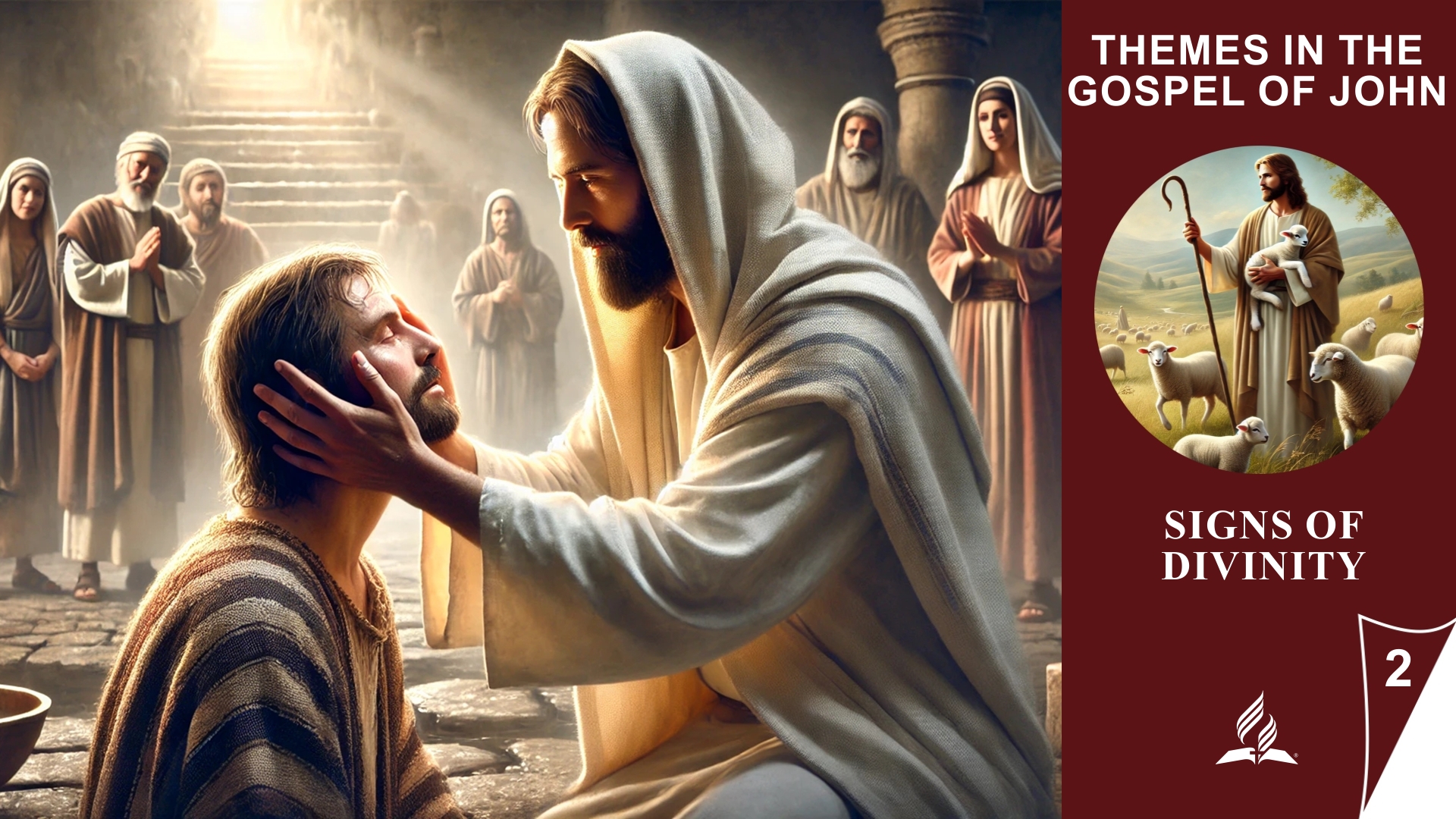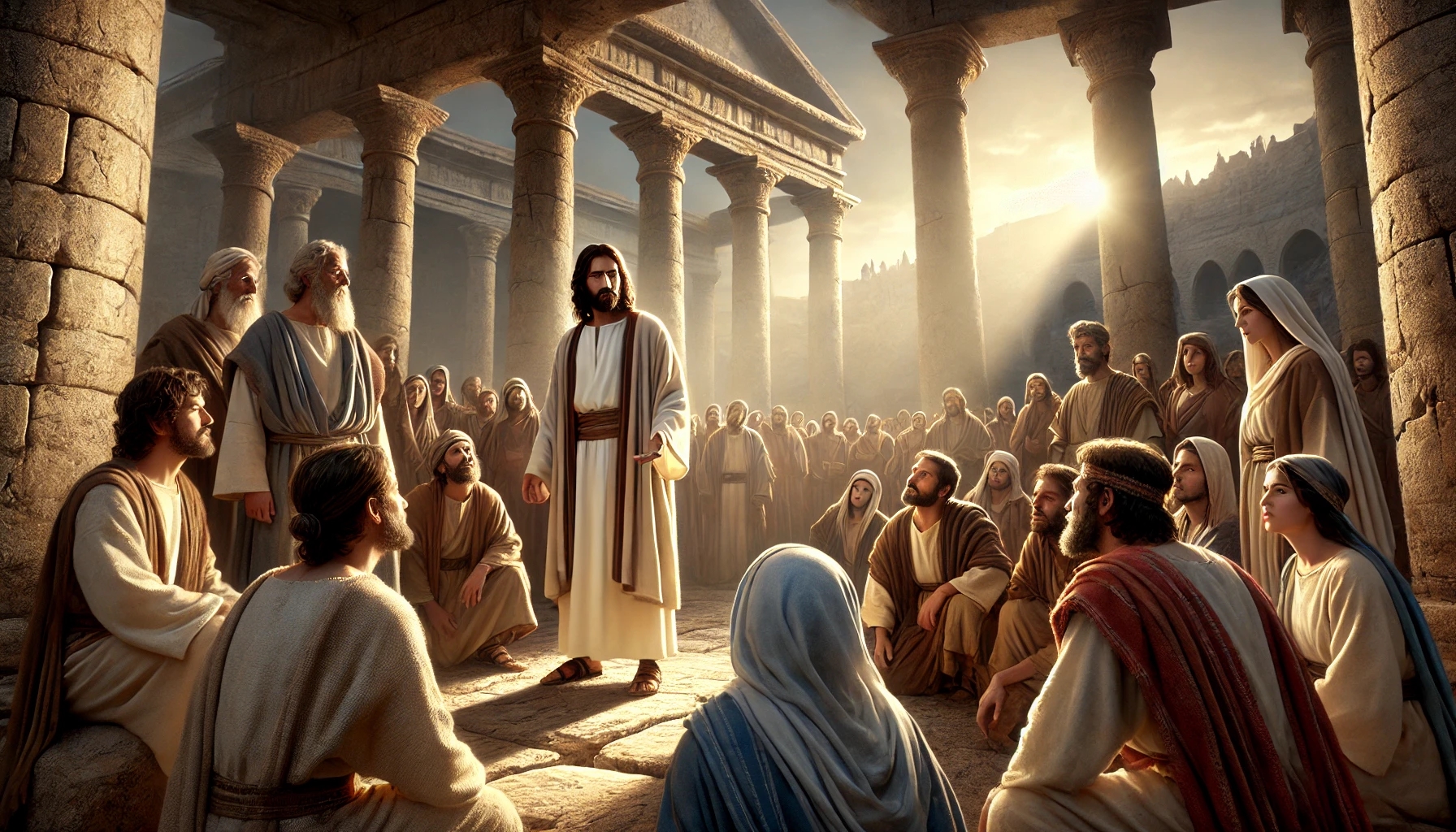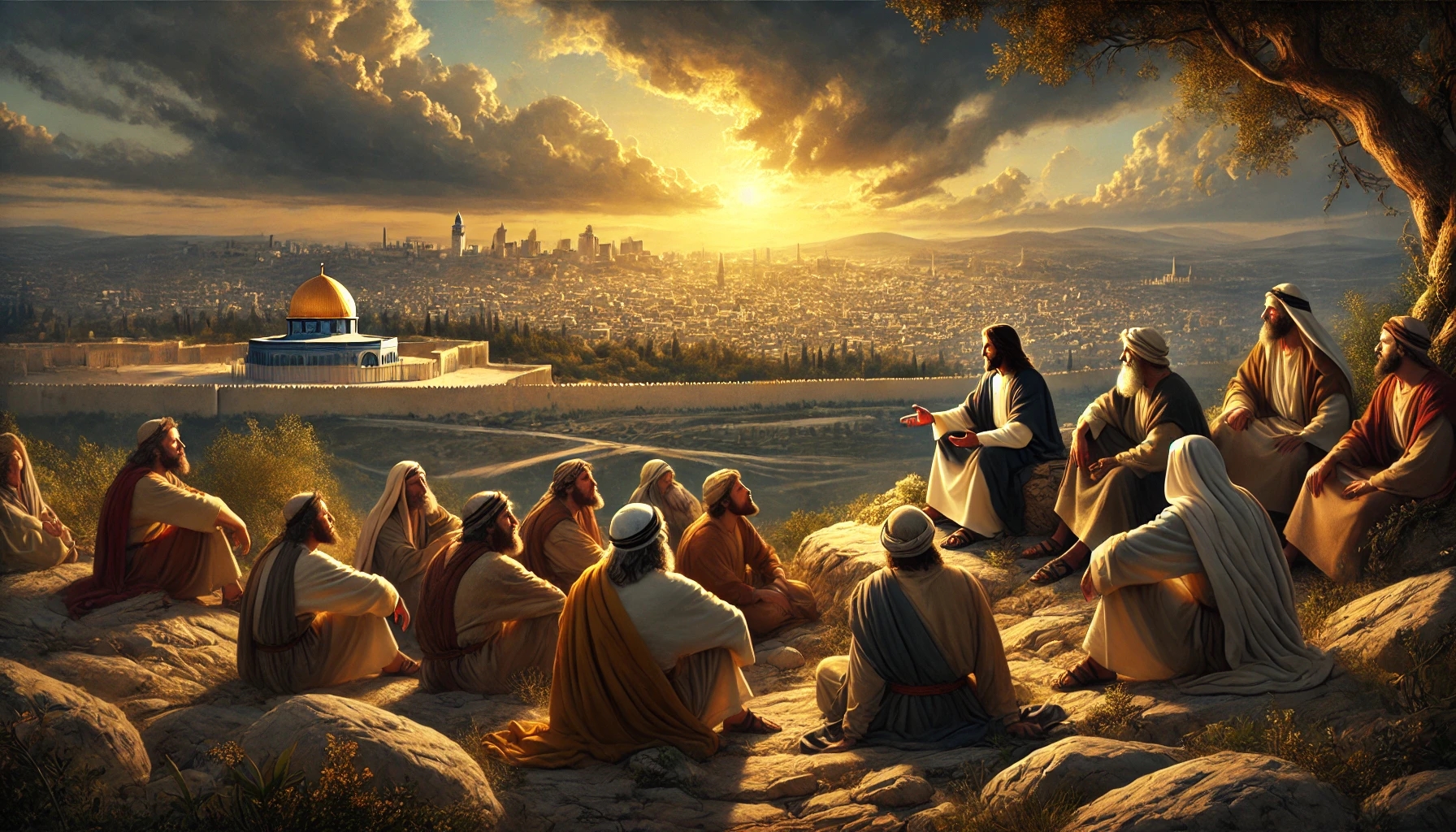Have you ever felt trapped by your past? In this video, I share my journey from the grips of witchcraft to finding freedom in God's Word through Adventist World Radio. Discover how prayer and spiritual truth transformed my life and my village. Hit that like button if you've experienced a life change! #FaithJourney #Transformation #AdventistWorldRadio #awr #adventistworldradio Watch the full video: https://www.youtube.com/watch?v=Ko5z7fnrVe4 MB01IQSFWC7CDGW #short Source: https://www.youtube.com/watch?v=bMaljN2O8W8
Atti 4:10 – Domenica 6 ottobre 2024
“Sia noto a voi tutti voi e a tutto il popolo d'Israele che questo è stato fatto nel nome di Gesù Cristo il Nazareno, che voi avete crocifisso, e che Dio ha risuscitato dai morti; è per la sua virtù che quest'uomo compare guarito in presenza vostra.” (Atti 4:10) Meditazione giornaliera “Apri la porta del tuo cuore”. Rubrica a cura di Anna Cupertino. Speaker: Gioia Comia Source: https://www.youtube.com/watch?v=0kZCMrlhGUk
Comments of the Week September 30-October 6

Comments of the Week September 30-October 6 Comments on The Beasts of Revelation, whether or not Adventist Higher Education can be saved, is God really in control, and Adventist-raised children who left the denomination. Is your comment featured here? Who Are the Beasts? I Don’t Know! “One of the main principles of responsible Bible study […] Source: https://atoday.org/comments-of-the-week-sept30-oct6/
Lesson 2.Signs of Divinity | 2.1 The Feeding of the Five Thousand | THEMES IN THE GOSPEL OF JOHN | LIVING FAITH


Lesson 2.Signs of Divinity
The Revelation of Jesus’ Divinity through His Miracles
Lesson 2 focuses on the revelation of Jesus’ divinity through His miracles and signs, as described in the Gospel of John. These miracles are more than just supernatural events—they are messages conveying deeper spiritual truths. Every sign that Jesus performs demonstrates that He is more than a prophet or teacher: He is the Son of God, possessing power over nature, illness, blindness, and even death itself.
The signs in this lesson call us to view Jesus not merely as a miracle worker but as the one who has come to bring spiritual life and to redeem humanity. In each miracle, a piece of His divine nature and His mission to deepen people’s faith is revealed. As Jesus feeds the crowds, heals the blind, and raises the dead, it becomes clear: He is the “Bread of Life,” the “Light of the World,” and the “Resurrection and the Life.” This lesson invites us to look beyond the signs and recognize in faith who Jesus truly is.
2.1 The Feeding of the Five Thousand
The Revelation of Jesus’ Divinity through the Feeding of the Five Thousand
Read John 6:1–14. What parallels can be found here between Jesus and Moses? In other words, what did Jesus do here that was meant to remind people of the liberation their ancestors experienced through the ministry of Moses?
The Gospel of John highlights important parallels between Jesus and Moses. A central detail is the temporal proximity of the feeding to the Passover festival, which commemorates the liberation of Israel from Egypt. John 6:4–5 emphasizes that Jesus wanted to remind people of the significance of Passover and the redemption through the sacrifice of the Passover lamb, which ultimately symbolizes His own sacrifice on the cross (cf. 1 Corinthians 5:7).
Through His actions in John 6:1–14, Jesus is portrayed as the “new Moses,” who not only provides physical sustenance in the form of bread but also points to His role as Savior and Redeemer. Just as Moses led the people out of bondage, Jesus comes to accomplish an even greater liberation: the redemption of humanity from sin.
Some key parallels between Jesus and Moses in this episode are:
-
Passover Time: The narrative takes place during Passover, reminding people of the liberation through Moses.
-
Mountain: Jesus ascends a mountain, similar to how Moses ascended Mount Sinai to receive the commandments from God.
-
Testing: Jesus tests Philip, much like the Israelites were tested in the wilderness.
-
Multiplication of Bread: The multiplication of bread echoes the manna provided to the Israelites in the wilderness.
-
Twelve Baskets: The collection of leftovers, especially twelve baskets full, symbolizes the twelve tribes of Israel and recalls God’s provision.
-
Prophet like Moses: The people recognize in Jesus the “Prophet” referenced in Deuteronomy 18:15.
Through these events, Jesus hints at His divinity. He is not merely a prophet like Moses but the promised Messiah who has come to save the world.
Read Isaiah 53:4–6 and 1 Peter 2:24. What great truth do these passages teach about Jesus as the Lamb of God? How is His divinity connected to this truth, and why is this truth the most important truth we can ever know?
The Great Truth about Jesus as the Lamb of God
Both passages clearly state that Jesus, though Himself without sin, took upon Himself the suffering and punishment for humanity’s sins. Isaiah describes how He was “pierced” and “crushed for our iniquities,” a clear foreshadowing of His sacrificial death on the cross. 1 Peter builds on this by emphasizing that Jesus “bore our sins in His body on the tree,” so that we might die to sin and live for righteousness, and through His wounds, we are healed.
The central truth of these texts is the substitutionary atonement of Jesus: He took our guilt and punishment upon Himself, though He was sinless. He is the sacrificial lamb slain for us so that we might receive life through His death. This concept directly corresponds to the Passover lamb, which symbolically replaced the death of the firstborn and saved Israel from destruction.
Connection to His Divinity
Jesus’ divinity is crucial for understanding this truth. Only a divine being, free from sin and moral guilt, could offer the perfect sacrifice for humanity’s sins. As the God-man, fully divine and fully human, He could pay the price for the world’s sins and restore the bridge between God and humanity.
-
His divinity means His sacrifice has infinite value, applicable not just to one person but to all humanity.
-
His humanity means He could fully identify with us by enduring pain, suffering, and death.
Why is this the Most Important Truth?
This truth is the foundation of the Christian faith. It answers the fundamental question of how a just God can forgive sin without compromising His justice. The answer lies in Jesus’ sacrificial death. Through His death, the way to God is opened; through His wounds, we are spiritually and morally healed. Without this truth, there would be no forgiveness or hope for eternal life.
Indeed, this is the most important truth we can ever know because it offers the possibility of reconciliation with God. It reveals God’s love and grace in their deepest form and provides us with the redemption that we could never achieve on our own.

This great truth—that Jesus is the Lamb of God who carries the sins of the world—is profoundly relevant to our everyday lives and faith. Here are some aspects of how this biblical teaching shapes our daily life and faith:
-
Freedom from Guilt and Forgiveness Since Jesus has borne our sins and died in our place, we can live each day in the freedom granted by the forgiveness of sins. This means we do not have to live under the burden of past mistakes and sins. The assurance of forgiveness allows us to renew ourselves and live in peace, strengthening our relationship with God and others as we learn to practice grace and forgiveness towards others.
-
Hope and Healing The verses from Isaiah 53 and 1 Peter 2:24 show that healing comes through His wounds. This encompasses not only physical healing but, more importantly, the healing of our hearts, minds, and souls. In difficult times or when facing pain and suffering, we can trust that Jesus understands and bears both our physical and spiritual wounds. This truth brings us comfort and a living hope that we are not alone in life’s challenges.
-
A Life of Righteousness Through Jesus’ sacrifice, we are invited to die to sin and live in righteousness (1 Peter 2:24). This means our daily lives should be characterized by a pursuit of holiness and justice. We are no longer slaves to sin but can live a new life empowered by Jesus, grounded in God’s righteousness. This is reflected in our ethics, decisions, and how we treat others. Living in righteousness means keeping God’s commandments and reflecting His love in all aspects of our lives.
-
Trust in God’s Provision The Feeding of the Five Thousand demonstrates that Jesus cares not only for people’s spiritual needs but also for their physical needs. This powerful reminder assures us that we can trust God to provide for us in our daily lives, whether materially or in moments of emotional or spiritual need. Just as the bread was multiplied, God can bless and multiply our limited resources when we trust Him.
-
Part of the Plan of Redemption Understanding that Jesus is the “new Moses” who brings not only physical but also spiritual liberation means that we are part of a larger plan of redemption. Every believer has a role in God’s kingdom. Just as people in Jesus’ time witnessed His miracles and signs, we today can witness God’s work in our lives and the world. Our daily lives become a testimony of His redemption and grace.
-
Humility and Gratitude The fact that Jesus, the Son of God, was willing to sacrifice Himself should lead us to deep humility and gratitude. Each day, we can remember the great sacrifice He made for us, prompting us to serve Him with a grateful and obedient heart. Our gratitude towards God helps us live in love and humility towards others.
-
Expectation of His Return The parallels between Jesus and Moses in liberating the people and the promise of the coming prophet show that Jesus not only came to redeem humanity from sin but will also return to complete His work of redemption. This hope of Christ’s return should motivate us daily to stay vigilant and ready, living our lives in accordance with God’s will.
Conclusion:
The revelation of Jesus’ divinity through His actions, such as the Feeding of the Five Thousand and His sacrifice as the Lamb of God, holds deep significance for our faith and daily lives. It teaches us to live in freedom and forgiveness, practice righteousness, trust in God’s provision, and maintain hope for ultimate redemption. This is the most important truth because it forms the foundation of our relationship with God and our eternal salvation.
Give God what you have and trust that He can do more with it than you ever imagined.
6.10.2024 – Luke Chapter 24 | BELIEVE HIS PROPHETS
October 6, 2024
DAILY BIBLE READING – Luke Chapter 24
1 Now upon the first day of the week, very early in the morning, they came unto the sepulchre, bringing the spices which they had prepared, and certain others with them.
2 And they found the stone rolled away from the sepulchre.
3 And they entered in, and found not the body of the Lord Jesus.
4 And it came to pass, as they were much perplexed thereabout, behold, two men stood by them in shining garments:
5 And as they were afraid, and bowed down their faces to the earth, they said unto them, Why seek ye the living among the dead?
6 He is not here, but is risen: remember how he spake unto you when he was yet in Galilee,
7 Saying, The Son of man must be delivered into the hands of sinful men, and be crucified, and the third day rise again.
8 And they remembered his words,
9 And returned from the sepulchre, and told all these things unto the eleven, and to all the rest.
10 It was Mary Magdalene and Joanna, and Mary the mother of James, and other women that were with them, which told these things unto the apostles.
11 And their words seemed to them as idle tales, and they believed them not.
12 Then arose Peter, and ran unto the sepulchre; and stooping down, he beheld the linen clothes laid by themselves, and departed, wondering in himself at that which was come to pass.
13 And, behold, two of them went that same day to a village called Emmaus, which was from Jerusalem about threescore furlongs.
14 And they talked together of all these things which had happened.
15 And it came to pass, that, while they communed together and reasoned, Jesus himself drew near, and went with them.
16 But their eyes were holden that they should not know him.
17 And he said unto them, What manner of communications are these that ye have one to another, as ye walk, and are sad?
18 And the one of them, whose name was Cleopas, answering said unto him, Art thou only a stranger in Jerusalem, and hast not known the things which are come to pass there in these days?
19 And he said unto them, What things? And they said unto him, Concerning Jesus of Nazareth, which was a prophet mighty in deed and word before God and all the people:
20 And how the chief priests and our rulers delivered him to be condemned to death, and have crucified him.
21 But we trusted that it had been he which should have redeemed Israel: and beside all this, to day is the third day since these things were done.
22 Yea, and certain women also of our company made us astonished, which were early at the sepulchre;
23 And when they found not his body, they came, saying, that they had also seen a vision of angels, which said that he was alive.
24 And certain of them which were with us went to the sepulchre, and found it even so as the women had said: but him they saw not.
25 Then he said unto them, O fools, and slow of heart to believe all that the prophets have spoken:
26 Ought not Christ to have suffered these things, and to enter into his glory?
27 And beginning at Moses and all the prophets, he expounded unto them in all the scriptures the things concerning himself.
28 And they drew nigh unto the village, whither they went: and he made as though he would have gone further.
29 But they constrained him, saying, Abide with us: for it is toward evening, and the day is far spent. And he went in to tarry with them.
30 And it came to pass, as he sat at meat with them, he took bread, and blessed it, and brake, and gave to them.
31 And their eyes were opened, and they knew him; and he vanished out of their sight.
32 And they said one to another, Did not our heart burn within us, while he talked with us by the way, and while he opened to us the scriptures?
33 And they rose up the same hour, and returned to Jerusalem, and found the eleven gathered together, and them that were with them,
34 Saying, The Lord is risen indeed, and hath appeared to Simon.
35 And they told what things were done in the way, and how he was known of them in breaking of bread.
36 And as they thus spake, Jesus himself stood in the midst of them, and saith unto them, Peace be unto you.
37 But they were terrified and affrighted, and supposed that they had seen a spirit.
38 And he said unto them, Why are ye troubled? and why do thoughts arise in your hearts?
39 Behold my hands and my feet, that it is I myself: handle me, and see; for a spirit hath not flesh and bones, as ye see me have.
40 And when he had thus spoken, he shewed them his hands and his feet.
41 And while they yet believed not for joy, and wondered, he said unto them, Have ye here any meat?
42 And they gave him a piece of a broiled fish, and of an honeycomb.
43 And he took it, and did eat before them.
44 And he said unto them, These are the words which I spake unto you, while I was yet with you, that all things must be fulfilled, which were written in the law of Moses, and in the prophets, and in the psalms, concerning me.
45 Then opened he their understanding, that they might understand the scriptures,
46 And said unto them, Thus it is written, and thus it behooved Christ to suffer, and to rise from the dead the third day:
47 And that repentance and remission of sins should be preached in his name among all nations, beginning at Jerusalem.
48 And ye are witnesses of these things.
49 And, behold, I send the promise of my Father upon you: but tarry ye in the city of Jerusalem, until ye be endued with power from on high.
50 And he led them out as far as to Bethany, and he lifted up his hands, and blessed them.
51 And it came to pass, while he blessed them, he was parted from them, and carried up into heaven.
52 And they worshipped him, and returned to Jerusalem with great joy:
53 And were continually in the temple, praising and blessing God. Amen.
King James Version. Public Domain
Commentary
Introduction
Luke Chapter 24 describes the events following Jesus’ resurrection and includes some of the most significant moments in the Christian faith. This chapter highlights the revelation of Jesus’ resurrection first to the women at the tomb, then to the disciples on the road to Emmaus, and finally to the entire group of disciples. Through these appearances and conversations, Jesus opens the disciples’ understanding of the fulfillment of Scripture and confirms his resurrection as a central truth of faith.
Commentary
The chapter begins with the discovery of the empty tomb on the first day of the week. The women who came to anoint Jesus found the stone rolled away and encountered two angels who announced Jesus’ resurrection. This message was met with disbelief by the apostles, but Peter ran to the tomb to confirm the truth. In the story of the disciples on the road to Emmaus, Jesus initially reveals himself in disguise and explains the Scriptures to them. When breaking bread, they recognize him, and their hearts are filled with joy and understanding. Finally, Jesus appears to his gathered disciples, proving his identity through his wounds and explaining the necessity of his suffering and resurrection. The chapter culminates in Jesus’ ascension, which ends with a blessing and leaves the disciples with great joy and hope.
Summary
Luke 24 narrates the resurrection of Jesus, his encounters with the disciples, and his ascension. It begins with the discovery of the empty tomb, leads to Jesus’ appearance to the disciples on the road to Emmaus, and culminates in his final revelation to the gathered disciples. This chapter emphasizes the fulfillment of Old Testament prophecies through Jesus’ suffering and resurrection, and it concludes with the promise of the Holy Spirit and the ascension.
![]()

WEEKLY SPIRIT OF PROPHECY READING – Ellen White | The Desire of Ages
Chapter 68—In the Outer Court
This chapter is based on John 12:20-42.
Read online here
Commentary
Introduction
Chapter 68 is based on John 12:20-43 and deals with a pivotal event in Jesus’ life, when Greeks expressed the desire to see him. This chapter highlights the transition from Jesus’ earthly ministry to his impending sacrificial death on the cross, which would hold significance not only for the Jews but for all humanity. The desire of the Greeks to see Jesus symbolizes the universal appeal of his sacrifice and the expansion of the Gospel beyond the Jewish people.
Commentary
The chapter begins with the Greeks’ request to see Jesus, which Jesus interprets as a sign of his imminent glorification through his death on the cross. This encounter is reminiscent of the Magi who came at Jesus’ birth, signaling that Jesus’ mission is now extending beyond the borders of Israel. Jesus seizes the moment to compare his death to a grain of wheat that must die to bear fruit, emphasizing the necessity of his sacrifice for the salvation of the world.
The chapter underscores the importance of self-sacrifice, both in Jesus’ life and in the lives of his followers. Jesus speaks of his coming exaltation on the cross as the moment when he will draw all people to himself. Despite these revelations, many remain in disbelief, and even some of the leaders are afraid to publicly confess their faith.
Summary
Chapter 68 describes the final moments of Jesus before his crucifixion, interpreting the Greeks’ desire to see him as a sign of the expansion of his mission. Jesus explains that his death, like the death of a grain of wheat, is necessary to bring forth new life. The chapter emphasizes the universal significance of Jesus’ sacrifice and the spread of the Gospel beyond Israel. It calls for self-sacrifice, both for Christ and his followers, while reflecting the deep sorrow over the continued disbelief of many.

WEEKLY SPIRIT OF PROPHECY READING – Ellen White | The Desire of Ages
Chapter 69—On the Mount of Olives
This chapter is based on Matthew 24; Mark 13; Luke 21:5-38.
Read online here
Commentary
Introduction
Chapter 69 is based on the writings of Matthew 24, Mark 13, and Luke 21:5-38. It addresses Jesus’ prophetic announcements regarding the destruction of Jerusalem and His second coming. This discourse, delivered on the Mount of Olives, provides the disciples and future generations with guidance and warnings about upcoming trials and God’s ultimate triumph. Jesus instructs His disciples on the signs of the times and calls for vigilance and faithfulness in light of the forthcoming events.
Commentary
In this chapter, Jesus warns His disciples about the impending destruction of Jerusalem while simultaneously alluding to His second coming. He intertwines these two events in His prophetic announcements, emphasizing the necessity of vigilance. The signs that indicate the destruction of Jerusalem also serve as harbingers of the end times. Jesus speaks of false prophets, wars, famines, and persecutions that will precede the final judgment. He reminds His disciples not to be deceived and to maintain their faithfulness to God, even in the face of persecution. Finally, He points to the inevitable coming of the Son of Man in power and glory and encourages believers to remain steadfast in prayer and in anticipation of His return.
Summary
Chapter 69 describes Jesus’ significant sermon on the Mount of Olives, in which He prophesies the destruction of Jerusalem and His second coming. He provides the disciples with signs of the impending events and calls for constant vigilance. By linking the fall of Jerusalem with the end times, Jesus urges believers to examine their hearts, avoid deception, and faithfully await His return. The chapter underscores that both the destruction of Jerusalem and the second coming of Christ are part of the divine plan and that God will ultimately save His believers.
Source: https://fulfilleddesire.net/6-10-2024-luke-chapter-24-believe-his-prophets/
- « Previous Page
- 1
- …
- 826
- 827
- 828
- 829
- 830
- …
- 7688
- Next Page »


